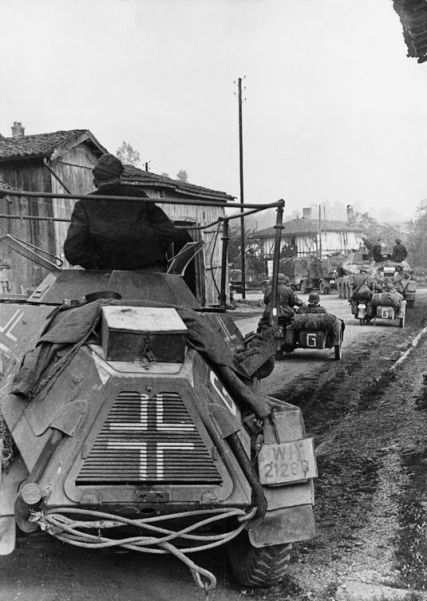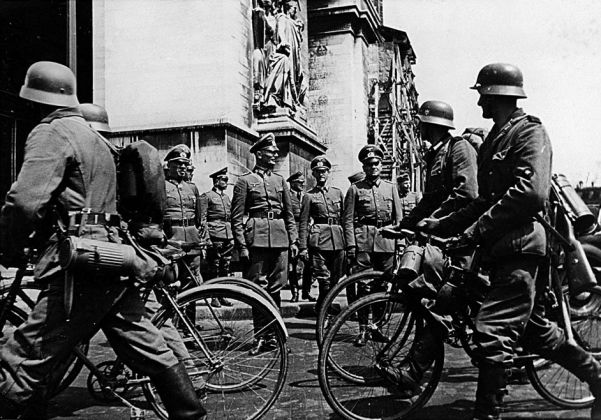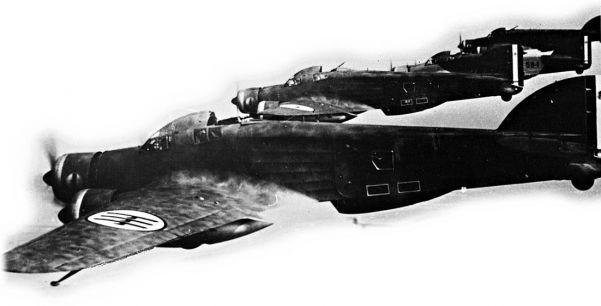1-9 June
Western Front, Norway
After Britain and France reveal to the Norwegians that they are to begin an evacuation, troops begin to withdraw on June 4. King Haakon and his government leave for Britain on the 7th, and 24,500 troops are evacuated. The king finally orders the Norwegians to stop fighting on June 9, after losing 1335 men in the campaign. Entire Allied losses include 5600 men, one carrier, two cruisers, nine destroyers plus other smaller craft, and 100 aircraft. German loses total 3692 men, 19 warships, and 242 aircraft.
3-4 June
Western Front, France
Operation Dynamo ends. The remarkable operation has rescued 338,226 men - two-thirds of them British - from the beaches of Dunkirk, although 243 vessels and 106 aircraft have been destroyed. General Lord Gort, the British Expeditionary Force’s commander, leaves Lieutenant General Sir Harold Alexander in command after being evacuated on May 31. The Germans occupy Dunkirk on June 4 and capture 40,000 French troops.
5-12 June
Western Front, France

A German force of 119 divisions opens Operation Red, the conquest of France, with General Fedor von Bock’s Army Group B attacking along the Somme River to reach the Seine River west of Paris by June 9. General Gerd von Rundstedt’s Army Group A, moving toward the Moselle River in Front of the Maginot Line, launches an offensive east of Paris. Rundstedt’s tanks, reinforced by Army Group B panzers, overcome resistance from the French Fourth Army to break through at Chalons-sur-Marne on the 12th.
France’s response, the Weygand Line, stretching along the Somme and Aisne Rivers, aims to protect Paris and the interior. Some of France’s 65 divisions fight determined actions, but many units lack manpower and equipment. Air attacks and logistical problems also undermine General Maxime Weygand’s vulnerable forces.
8 June
Sea War, North Sea
The German battlecruisers Scharnhorst and Gneisenau sink three empty vessels while hunting for convoys from Norway. They then sink the British carrier Glorious and two destroyers. These losses are blamed on the British failure to provide sufficient naval escorts for the Norway convoys.
10 June
Western Front, France
Some 11,000 British and other French troops begin to evacuate from St. Valéry and Le Havre to Britain.
10-11 June
Politics, Italy
Italy declares war on France and Britain. Benito Mussolini, eager to capitalize on France’s collapse, enters the war despite previous assertions that his nation will not have the capability to fight alongside Germany until 1942. Canada declares war on Italy on the 10th, as do Australia, New Zealand, and South Africa the following day.
12-14 June
Sea War, Mediterranean
Britain launches a naval bombardment against the Italian base of Tobruk, Libya, on the 12th. The French Navy bombards the ports of Genoa and Vado on the 14th. British air raids are also made on Turin and Genoa. Libyan and East African airfields are raided.
13 June
Politics, United states
President Franklin D. Roosevelt signs a $1.3 billion navy bill to improve the service. Shipments of arms also leave the country in response to Winston Churchill’s request to Roosevelt for surplus weapons.
13-25 June
Western Front, France

Paris is declared an ‘open city’ in order to save it from destruction and all French forces withdraw south of the capital, leaving the Maginot Line isolated. German troops enter Paris on June 14 as thousands flee the capital. Germany’s Army Group C, deployed from the Maginot Line to the Swiss border, breaks through French defenses. German forces advance in all directions, crossing the Rhine and Loire Rivers. All of the coastal ports between Cherbourg and St. Nazaire are soon captured.
15-25 June
Western Front, France
The evacuation of the remaining Allied troops in northwest France begins.
Operation Ariel extends this to the Biscay ports from the 16th. Some 214,000 troops are saved during the evacuation, although 3000 perish when the liner Lancastria is sunk on the 17th.
16-24 June
Politics, France
Prime Minister Paul Reynaud fails to motivate his government to continue fighting and releases France from its agreement with Britain not to make any separate peace. France rejects a British idea to create a union between the countries. Reynaud, after losing support, resigns and Marshal Henri-Philippe Pétain replaces him. Pétain requests Germany’s armistice terms on the 17th, and the signing takes place at Compiègne, site of the World War I armistice agreement, on the 22nd. Under the terms Germany occupies two-thirds of France, including the Channel and Atlantic coastlines. The south, which becomes known as Vichy France, will have a nominal French administration and keep its colonies.
After Italy’s armistice with France on the 24th, a cease-fire occurs on all Fronts. French casualties since May 10 total more than 85,000 men, the British lose 3475 men, and German losses reach 27,074.
While Pétain’s regime will collaborate with Nazi Germany, the French Army officer Brigadier General Charles de Gaulle begins broadcasting his opposition from London on the 18th with pledges to liberate the country.
20 June
Politics, United States
Democratic President Franklin D. Roosevelt appoints two anti-isolationist Republicans to his cabinet. Henry Stimson becomes secretary for war and Frank Knox is appointed secretary for the navy.
20-21 June
Western Front, France

Benito Mussolini launches attacks along the south coast. Offensives are also made along the Franco-Italian border. Italy also bombs the strategically-important island of Malta.
26 June
Politics, Romania
The government agrees to the Soviet occupation of Bessarabia and northern Bukovina, although Romanian troops attempt to halt the Red Army when it enters the country.
30 June
Western Front, Channel Islands
Germany invades the Channel Islands. This is the only British territory occupied during hostilities.
